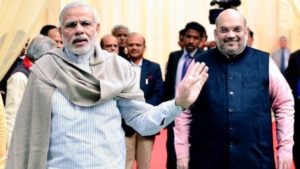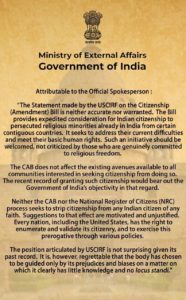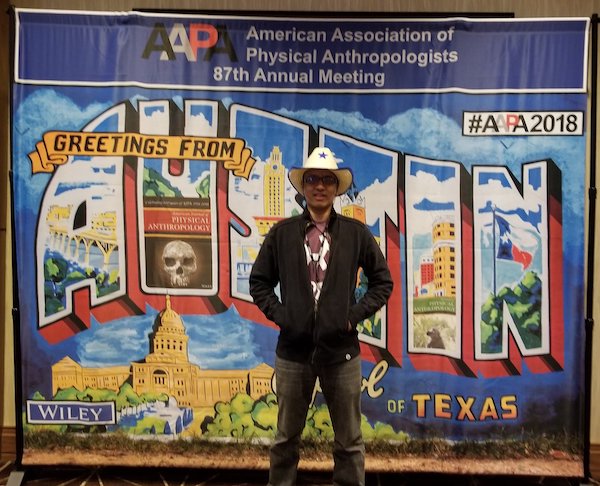The feverish pitch over the Citizenship Amendment Bill has reached a crescendo. The Indian lower house of parliament has overwhelmingly passed it with it now reaching the upper house. Most likely, it will pass with the support of “neutral” parties pushing the bill over majority.

Under the CAB – Hindus, Sikhs, Buddhists, and Christians (basically persecuted communities of Afghanistan, Pakistan, Bangladesh) will receive asylum and an accelerated path to citizenship.
Critics label this bill as anti-Muslim and rhetoric from certain BJP members does not help in the defense against this accusation.
But again consistent with the common theme of international coverage of India, we are missing context (or more accurately, outlets are leaving it out purposefully).
What’s A Partition?
Not the Beyoncé song. If you have an inkling of knowledge about subcontinental history, you know about the partition and the Two Nation Theory (TNT). TNT was proposed by an Islamist ideologue named Syed Ahmed Khan of Aligarh Muslim University in the late 1800s. Muhammed Ali Jinnah ran with the idea and eventually convinced enough Muslims to vote for partition (Hindus, Sikhs, etc… were not polled for their vote). In the midst of continued violence (much of it encouraged by Jinnah’s Muslim League), the Indian National Congress would acquiesce to partition. Massive violence followed with millions of Hindus, Muslims, and Sikhs dead.

However, while Pakistan became an Islamic state, India remained secular (though its minority appeasement down the line really pushes that definition).
India had given up 1/3 of its land to satisfy (separatist) Muslims yet still had 9% of its population as Muslims post-partition. The Muslim population in India would grow to around 15% today while a trident of partition, Pakistani civil war, and persistent persecution would annihilate the Hindu population in Pakistan and Bangladesh (From 1941 to present, the land containing current day Bangladesh’s Hindu population dropped from 28% to 9% while Pakistan’s Hindu population dropped from 14% to 2%.)
It is the shadow of partition that looms large over the CAB.
The Entry Rules?
Defenders of the CAB say it gives refuge to persecuted minorities in true Indian tradition (Baghdadi Jews, Syrian Christians, Persian Zoroastrians, and Tibetan Buddhists have all received refuge in India over thousands of years). However it brings to point the case of Islamic minorities (Shias, Ahmediyas, Ex-Muslims, etc…). Many of these minorities face horrid persecution in the Islamic subcontinental states. Why should India also turn them back?
Now is where the acceptance of partition arrives. CAB critics say by rejecting persecuted Muslims, India validates Jinnah and the TNT. I can honestly understand this perspective. Why should these Muslims pay for the sins and mistakes of their ancestors?

On the flip side, CAB supporters return with saying they are merely accepting realities. Threats of national security, demographic change, as well as a cold hard perspective that India owes nothing to those related to its partition (non-Indian Muslims) are valid reasoning no matter how un-PC they are. In addition, the CAB has no bearing on Indian Muslims.
Even deeper, CAB supporters see this as India fulfilling its duty as a refuge of Dharma in the case of Hindus, Buddhists, and Sikhs. The near complete obliteration of Dharmic religion from these lands is not forgotten and won’t be any time soon.
Perceptions
The legalese with regards to the bill seems iffy on its constitutionality. The Indian constitution bars discrimination based on religion within India. However it doesn’t bar discrimination with regards to non-Indian citizens.
India’s Home Minister Amit Shah (and probably next Prime Minister), has foreseen this. During a firebrand speech recently, Shah pointed out the litany of laws favoring minorities in India thereby showing a mirror to the Indian state’s institutional religious discrimination. This poses a major problem for the opposition. Add to the fact that the BJP has massive political capital after the Kashmir and Ram Mandir episodes, the centre possesses an insurmountable high ground over its opponents.

But what about a moral high ground?
Western media laments at how India has degenerated to fascism these days. Is this perception reality? Probably not in my opinion.
I think what irks many of these outlets is an assertive India that no longer looks for the approval of the West (or a deracinated brown sahib/a in their place).
What has caught my mind recently is how Western coverage of India is affecting perceptions of India abroad. While some saw Modi as an aberration of a “secular, democratic, and liberal” Indian ethos, now they are beginning to realize Modi and Hindutva are here to stay. Does that mean India will slide into fascism?
On the other hand, many domestic Modi supporters would say that Modi is fulfilling a “secular, democratic, and liberal” ethos that India lacked for so long under Congress rule! Of course in both of these scenarios, I am speaking of white collar middle class folks’ perspectives. Other demographics would say Modi is fulfilling his role as a Hindu leader giving refuge to the persecuted Hindus in lost lands (this may honestly be the biggest vote catcher for the CAB and primary driver of the BJP’s push).
Then comes the thought – how will policy towards India be affected? While Western foreign policy hasn’t been egregiously affected by bipartisan slants, we are now entering a highly polarized era. The latest incarnation of Western right wing governments seem to favor India, but future demographics are hilariously skewed in favor of the left wing across a number of Western countries.
As the world becomes more globalized, it will be interesting how influential Western media outlets will be on the increasingly connected youth of developing nations including India (the caveat is India’s youth are more pro BJP than older generations).
Yes, opinions can change as we age but it is fairly apparent that your average millennial takes the word of BBC/NYT/Wash Post as gospel. We will have to see how a Western left wing government reacts to India, especially one whose constituency is in congruence with this “India = Fascist” narrative. Throwing in the wrench of India’s rising economic clout, these parties will have a bit of a conundrum.
Though it must be said, do that many Westerners even really care about India?



